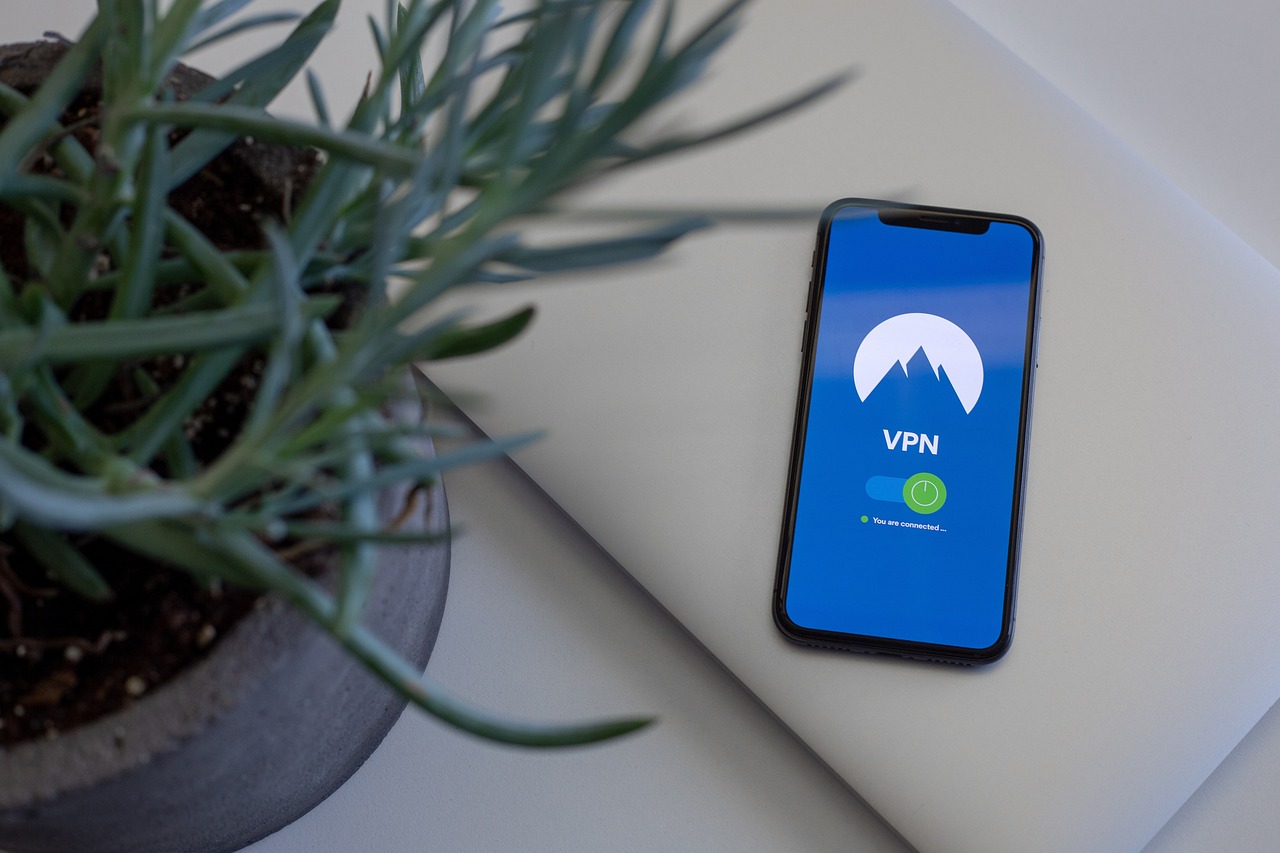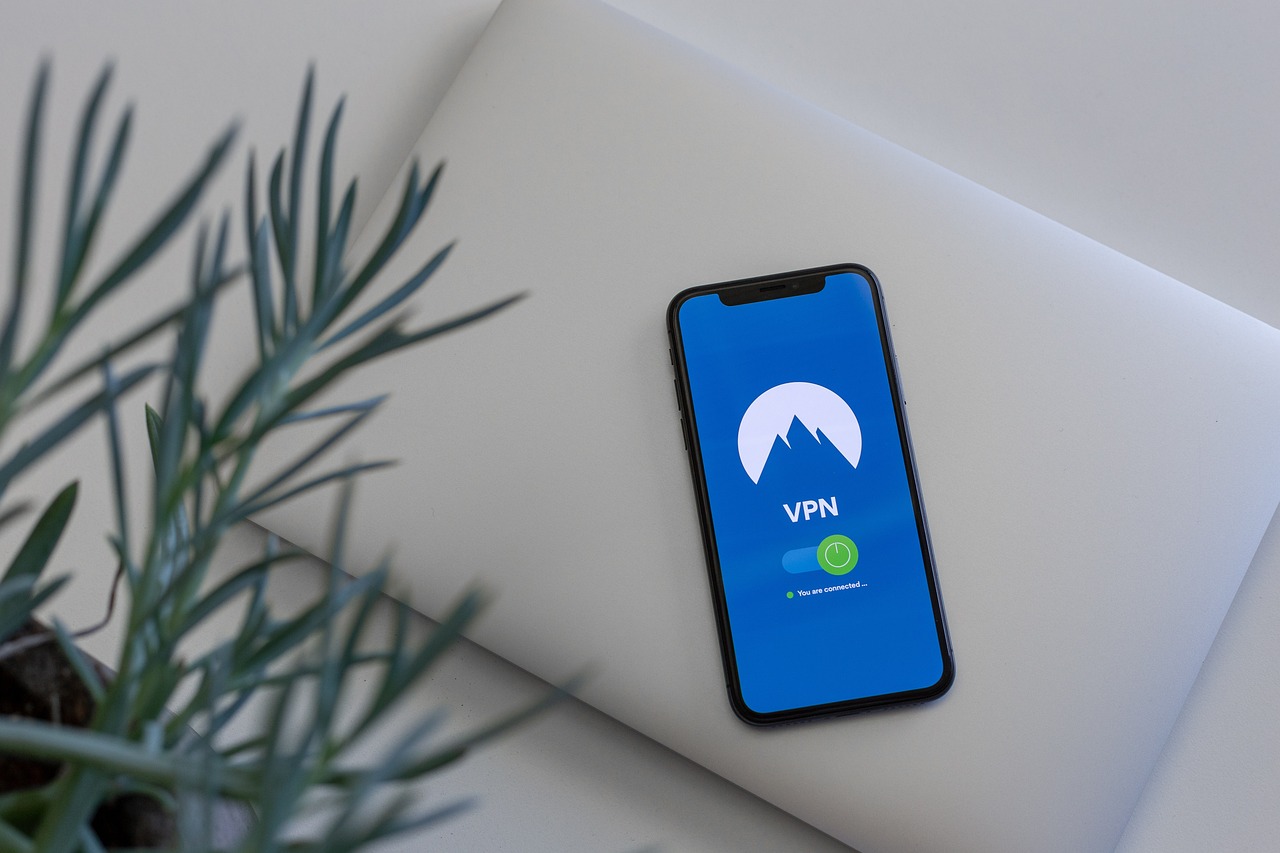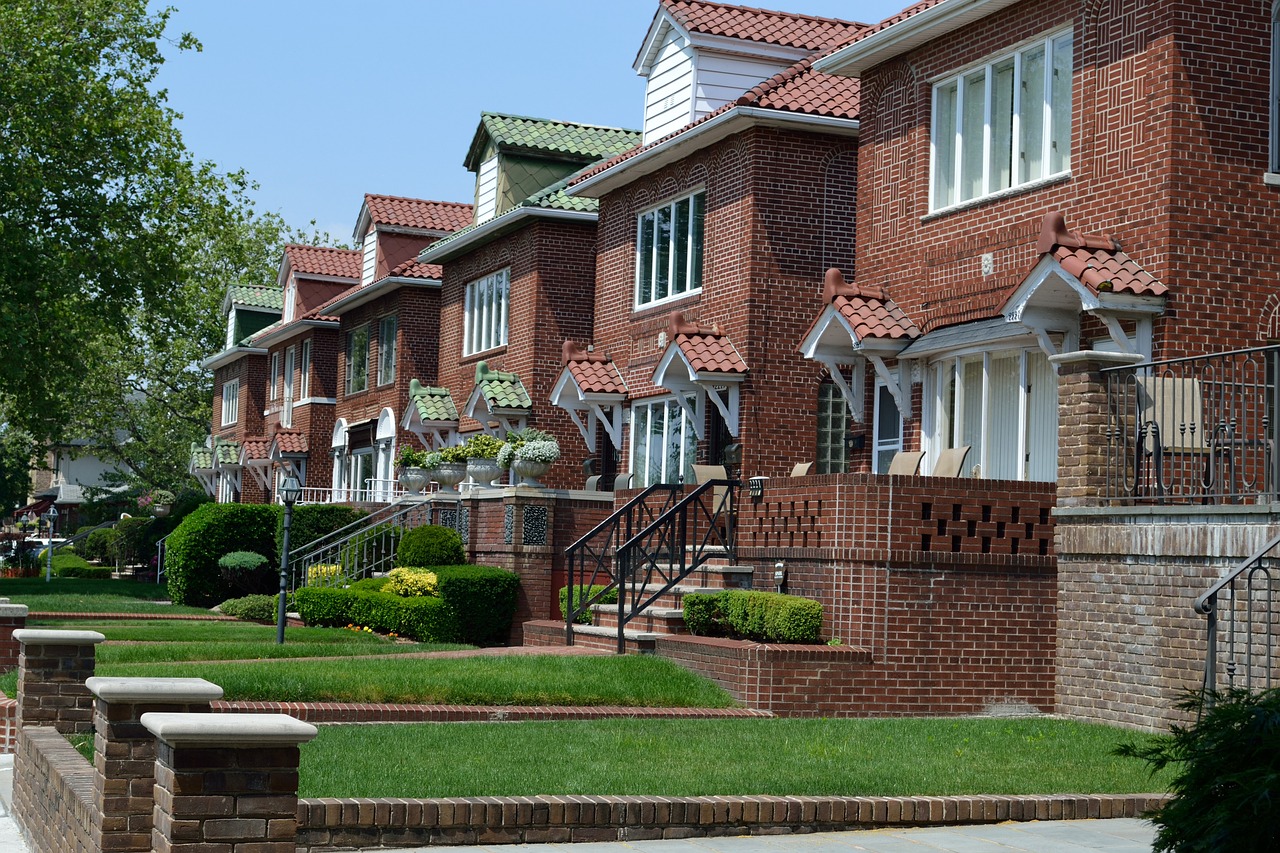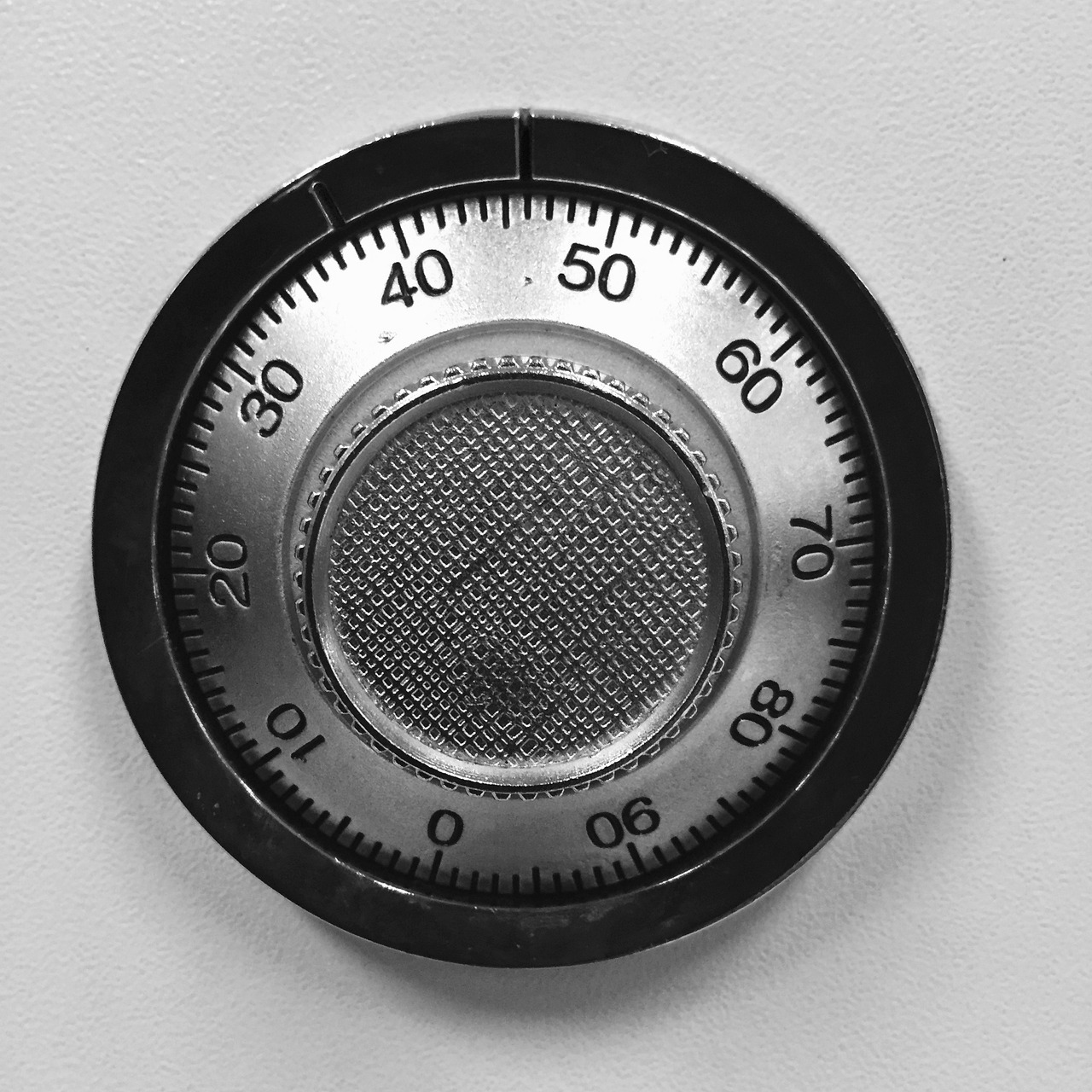How to Prevent Home Invasions?
In an age where safety is paramount, understanding how to prevent home invasions is crucial for every homeowner. Home invasions can be terrifying experiences, not just because of the potential loss of property but also due to the emotional toll they take on individuals and families. The thought of an intruder entering your sanctuary can be unsettling, but with the right strategies in place, you can significantly reduce the risk. This article explores effective strategies to enhance home security and reduce the risk of break-ins, providing practical tips for homeowners to safeguard their properties and loved ones.
Home invasions are more common than many people realize. According to recent statistics, a burglary occurs every 23 seconds in the United States. Intruders often use various methods to gain access to homes, such as picking locks or exploiting weak points in security systems. The psychological impact on victims can be profound, leading to anxiety and a sense of vulnerability. By understanding the common tactics employed by intruders, homeowners can better prepare and enhance their awareness. It’s essential to remember that prevention starts with being informed and proactive.
One of the most effective ways to prevent home invasions is by securing all entry points. Doors and windows are the primary access points for intruders, making it vital to ensure they are properly secured. Investing in high-quality locks and security systems can deter potential intruders. For instance, a sturdy deadbolt lock can be a significant barrier against unauthorized entry. Additionally, using security systems that include alarms and cameras can provide peace of mind and a sense of safety. The presence of visible security measures often makes a home less appealing to burglars.
When it comes to locks, not all are created equal. Homeowners should consider a variety of options, including:
- Deadbolts: These provide a strong level of security as they cannot be easily picked or forced open.
- Smart Locks: These modern locks allow homeowners to control access remotely, making it easy to monitor who enters and exits the home.
- Traditional Locks: While they may not offer the same level of security as deadbolts, they can still be effective when used in conjunction with other security measures.
Choosing the right locks can make a world of difference in protecting your home.
Incorporating smart home technology into your security plan can be a game-changer. Smart locks, cameras, and alarms can be monitored remotely, allowing homeowners to keep an eye on their property from anywhere. Imagine being at work and receiving a notification on your phone that someone is at your front door. With smart technology, you can see who it is and even communicate with them through two-way audio. This level of control not only enhances security but also provides peace of mind.
Windows are often overlooked when it comes to home security. However, they can be a weak point for intruders. To reinforce your windows, consider the following:
- Window Locks: Ensure all windows have sturdy locks that are in good working condition.
- Security Film: Applying security film can help prevent windows from shattering easily.
- Window Bars: For added security, installing decorative window bars can deter intruders while still allowing light and ventilation.
By taking these steps, you can make your windows less vulnerable to break-ins.
Outdoor security is just as important as indoor security. Proper lighting around your home can deter intruders, as they prefer to operate in the dark. Motion sensor lights can be particularly effective, illuminating areas when movement is detected. Additionally, landscaping plays a crucial role in home security. Keeping bushes and trees trimmed can eliminate hiding spots for potential intruders. Installing fences can also create a secure perimeter around your property, making it more difficult for someone to access your home unnoticed.
Community involvement is a powerful tool in preventing home invasions. Establishing or joining a neighborhood watch program can enhance security through collaboration and vigilance among residents. When neighbors look out for one another, it creates a sense of community and shared responsibility. Regular meetings can help build relationships and foster communication about safety concerns. Plus, a united neighborhood sends a strong message to potential intruders that criminal activity will not be tolerated.
Fostering awareness within the community about safety and security is vital. Encourage neighbors to communicate openly and report suspicious activities effectively. Consider organizing safety workshops or inviting local law enforcement to speak about crime prevention. The more informed and engaged the community is, the safer everyone will feel. Remember, safety is a collective effort, and together, you can create a more secure environment for all.
Even with the best preventive measures in place, it’s crucial to have an emergency plan for potential break-ins. Discuss with your family what to do in case of an intruder. Identify safe rooms where everyone can gather and establish a communication plan. Having a strategy can help reduce panic during an incident and ensure everyone knows how to react. Remember, preparation is key to staying safe.
1. What are the best types of locks for home security?
The best types of locks include deadbolts, smart locks, and high-security locks designed to resist picking and bumping.
2. How can I make my windows more secure?
You can make your windows more secure by installing window locks, applying security film, and using window bars.
3. What should I do if I suspect a home invasion?
If you suspect a home invasion, do not confront the intruder. Instead, find a safe place to hide, call the police, and wait for help.
4. How can a neighborhood watch program help?
A neighborhood watch program encourages community members to be vigilant and report suspicious activities, which can deter crime.
5. What smart home devices are best for security?
The best smart home devices for security include smart locks, security cameras, and smart alarms that can be monitored remotely.

Understanding Home Invasions
Home invasions are more than just a violation of personal space; they are traumatic experiences that can leave lasting emotional scars on victims. According to recent statistics, a home burglary occurs every 26 seconds in the United States, highlighting the alarming frequency of these incidents. Intruders often employ a variety of methods to gain entry, from simple techniques like picking locks to more aggressive approaches such as breaking windows. Understanding these tactics is crucial for homeowners who wish to fortify their defenses.
The psychological impact of home invasions cannot be overstated. Victims may experience feelings of vulnerability, anxiety, and fear long after the incident has occurred. In fact, many report a significant decline in their sense of safety within their own homes. This emotional toll emphasizes the importance of being proactive in preventing such invasions. By understanding the common methods used by intruders, homeowners can take targeted actions to enhance their security and protect their loved ones.
Here are some common methods used by intruders:
- Forced Entry: This is often the loudest and most aggressive method, involving breaking doors or windows.
- Lock Picking: Many burglars are skilled at picking standard locks, which is why choosing the right locks is essential.
- Social Engineering: Intruders may pose as delivery personnel or maintenance workers to gain access to your home.
Awareness is the first step towards prevention. Homeowners should regularly assess their properties for vulnerabilities, such as poorly lit areas or easy access points. By staying informed and vigilant, you can significantly reduce the risk of becoming a victim of a home invasion.
In conclusion, understanding the nature of home invasions is vital for any homeowner. By recognizing the statistics, common methods, and psychological effects associated with these crimes, you can take proactive measures to safeguard your home and create a secure environment for your family. After all, a little awareness can go a long way in preventing a potential tragedy.

Securing Entry Points
When it comes to home security, securing your entry points is like putting a sturdy lock on your treasure chest. Think about it: your doors and windows are the gateways to your sanctuary, and if they're not properly fortified, you're essentially inviting trouble in. Home invasions can happen to anyone, and it's crucial to take proactive measures to deter potential intruders. In this section, we'll delve into various strategies that can significantly enhance the security of your home, ensuring that you and your loved ones feel safe and sound.
First and foremost, let’s talk about the importance of strong locks. A flimsy lock is like a flimsy piece of paper; it won't hold up against any real pressure. Investing in high-quality locks for your doors is essential. Deadbolts are a popular choice because they provide an extra layer of security. Unlike standard spring bolt locks, deadbolts require a key or thumb turn to open, making them much harder for intruders to pick or force open. For those who love technology, smart locks are an excellent option as they offer keyless entry and can be monitored via your smartphone, giving you peace of mind even when you're not at home.
So, how do you choose the right locks? It’s like picking the right armor for a knight! Here’s a quick overview of some popular lock types:
| Type of Lock | Description | Pros | Cons |
|---|---|---|---|
| Deadbolt | A lock that requires a key or thumb turn. | High security, hard to pick. | Requires installation. |
| Smart Lock | A keyless lock that can be controlled via smartphone. | Convenient, remote access. | Battery-operated, potential tech issues. |
| Traditional Lock | Standard spring bolt lock. | Inexpensive, easy to install. | Less secure than deadbolts. |
Next, let’s not forget about windows! They are often overlooked but can be a weak point in home security. Many intruders will try to gain access through windows because they believe they are easier to breach. To combat this, consider installing window locks and using security film to reinforce the glass. Security film can make the glass more shatter-resistant, making it harder for intruders to break in. Additionally, window bars can serve as a physical barrier against break-ins, giving you another layer of protection.
Now, let’s talk about the role of smart home technology in securing your entry points. Smart locks, cameras, and alarms can be integrated into your home security system, allowing you to monitor your property remotely. Imagine being at work and receiving a notification on your phone that someone is at your front door. With a smart doorbell camera, you can see who it is and even communicate with them, all from your smartphone. This not only deters potential intruders but also gives you the power to take action if necessary.
In addition to locks, reinforcing your windows is crucial. Consider using security film, which can be applied to the glass to make it more resistant to breakage. This means that even if an intruder tries to smash the window, it will take them longer to gain entry, increasing the chances of them abandoning their attempt. Furthermore, installing window bars can act as a strong deterrent, making it clear that your home is not an easy target. Just like a knight’s shield, these barriers can protect you from unwanted guests.
Lastly, don’t underestimate the power of outdoor security measures. Proper lighting around your entry points can make a significant difference. A well-lit exterior not only helps you see who is approaching your home but also deters criminals who prefer to operate under the cover of darkness. Consider motion-sensor lights that turn on when someone approaches, illuminating the area and making it less appealing for intruders.
In conclusion, securing entry points is a fundamental aspect of home safety. By investing in quality locks, reinforcing windows, and utilizing smart home technology, you can create a formidable barrier against potential intruders. Remember, your home is your castle, and it deserves the best protection you can provide!

Choosing the Right Locks
When it comes to securing your home, is one of the most critical decisions you can make. Locks are your first line of defense against intruders, and with the variety of options available today, it’s essential to understand what each type offers. Think of your home as a fortress; the stronger your locks, the harder it is for unwanted guests to breach your defenses. So, what should you consider when selecting locks?
First off, let’s talk about the most common types of locks you’ll encounter:
- Deadbolts: These are often considered the gold standard in residential security. Unlike spring bolt locks, deadbolts provide a much higher level of resistance against forced entry. They come in single and double-cylinder versions, with the former being easier to operate but the latter offering additional security in homes with glass near the door.
- Smart Locks: In our tech-savvy world, smart locks are gaining popularity. They allow you to control access to your home through your smartphone, offering features like temporary access codes for guests and the ability to monitor who enters and exits your home. Just imagine being able to unlock your door for a friend without being home!
- Traditional Locks: While they may not be as high-tech, traditional locks can still provide decent security, especially when paired with a good deadbolt. However, you should always ensure these are of high quality and preferably made of solid metal.
Now, it’s not just about the type of lock; the quality of the lock matters too. Look for locks that meet the ANSI/BHMA grading system, which ranks locks based on their durability and security. Here’s a quick breakdown:
| Grade | Description |
|---|---|
| Grade 1 | Best for commercial use; extremely durable and secure. |
| Grade 2 | Suitable for residential use; offers good security. |
| Grade 3 | Basic residential locks; may not withstand heavy force. |
When selecting locks, consider your specific needs. For example, if you live in a high-crime area, investing in high-grade deadbolts or smart locks may be worth the extra cost. On the other hand, if you’re in a low-risk neighborhood, a good quality traditional lock might suffice. It’s all about assessing your risks and taking the appropriate measures.
Finally, remember that locks are only as strong as their installation. Even the best lock can be compromised if it’s not installed correctly. Therefore, hiring a professional locksmith to install your locks can be a wise investment. They can ensure that the locks are fitted correctly and provide advice on the best options for your home.
In conclusion, choosing the right locks is a crucial step in safeguarding your home. By understanding the different types of locks available, considering their quality, and ensuring proper installation, you can significantly enhance your home’s security. After all, a well-secured home is a happy home!
Q: What is the best type of lock for my front door?
A: A deadbolt lock is generally recommended for front doors, preferably a Grade 1 deadbolt for maximum security.
Q: Are smart locks safe?
A: Yes, smart locks can be very safe if they are from reputable brands and are installed correctly. Always ensure your Wi-Fi network is secure when using smart devices.
Q: How often should I change my locks?
A: It’s advisable to change your locks whenever you move into a new home or after a security breach. Regular maintenance and checks can also help ensure they are working properly.

Smart Home Technology
In today’s fast-paced world, is revolutionizing the way we secure our homes. Imagine having the ability to control your home’s security system right from your smartphone, no matter where you are! This level of convenience not only offers peace of mind but also acts as a significant deterrent against potential intruders. With advancements in technology, homeowners are no longer limited to traditional security systems; they can now integrate a variety of smart devices that enhance safety and streamline their security efforts.
One of the most popular components of smart home security is the smart lock. Unlike conventional locks, smart locks allow you to lock and unlock your doors using your smartphone or a keypad. This means you can give access to trusted friends or family members without needing to hand over a physical key. Additionally, many smart locks come with features like automatic locking, which ensures that your doors are secured even if you forget to lock them when leaving home. Some models even provide alerts when someone enters or exits your home, keeping you informed about who’s coming and going.
Another essential element of smart home technology is the use of security cameras. These devices can be placed both indoors and outdoors, providing you with a comprehensive view of your property. Modern security cameras often come with features such as motion detection, night vision, and two-way audio that allows you to communicate with anyone on your property through your smartphone. Imagine being able to see who’s at your door while you’re at work or being alerted to unusual activity in your backyard. This level of surveillance not only helps in preventing break-ins but also aids in gathering evidence if an incident occurs.
Moreover, smart alarms have become increasingly sophisticated. Today’s alarms can be integrated with your home’s smart devices, allowing for seamless communication between your security systems. For example, if a window is breached, the alarm can trigger your smart lights to flash and send an alert to your phone, ensuring that you’re always in the loop. This immediate response can be crucial, as it allows you to act quickly, whether that means contacting the authorities or checking your camera feeds.
While the benefits of smart home technology are clear, it’s essential to consider the security of these devices themselves. Just as you would secure your physical home, it’s crucial to protect your digital home. Ensure that you change default passwords, use strong and unique passwords, and enable two-factor authentication whenever possible. By taking these precautions, you can enjoy the benefits of smart technology while minimizing the risks associated with cyber threats.
In summary, incorporating smart home technology into your security plan can significantly enhance your home’s safety. With smart locks, security cameras, and integrated alarm systems, you can create a comprehensive security network that provides real-time monitoring and alerts. So, why not take advantage of these innovations? Your home deserves the best protection available!
- What is a smart lock and how does it work?
A smart lock is a keyless locking mechanism that can be controlled via a smartphone app or a keypad. It allows for remote locking and unlocking, and can also provide alerts about door activity.
- Are smart security cameras worth the investment?
Yes! Smart security cameras offer real-time monitoring, motion alerts, and the ability to view your property from anywhere, making them a valuable addition to any security system.
- How can I ensure my smart home devices are secure?
To secure your smart home devices, use strong, unique passwords, enable two-factor authentication, and regularly update your device firmware to protect against vulnerabilities.

Reinforcing Windows
When it comes to home security, windows are often the most vulnerable entry points. Many intruders see them as an easy way in, especially if they are not adequately secured. So, how can you turn your windows from weak points into fortified barriers? Let’s dive into some effective strategies that not only enhance your home’s security but also give you peace of mind.
First off, consider installing window locks. While most windows come with basic locks, upgrading to more robust locking mechanisms can make a significant difference. Look for locks that are specifically designed for security, such as keyed locks or pin locks. These types of locks are harder to pick and provide an extra layer of protection against unwanted access.
Another excellent option is to apply security film to your windows. This transparent film can be applied directly to the glass, making it much harder to break. In fact, security film can hold the glass together even if it’s shattered, which means that an intruder will have a much tougher time getting through. It’s like giving your windows a superhero cape—they may look the same, but they’re much stronger than they appear!
For those who want to take their security a step further, consider installing window bars. While they can give a home a more fortified look, they also serve as a significant deterrent for potential burglars. Just imagine an intruder staring at your barred window, realizing it’s going to take more than a simple shove to get inside. However, it’s essential to ensure that these bars can be opened from the inside in case of an emergency, as safety should always come first.
Additionally, don’t overlook the importance of landscaping. Keeping shrubs and trees trimmed can prevent potential intruders from using them as cover while they attempt to break into your windows. A well-lit exterior not only enhances your home’s curb appeal but also makes it less inviting for would-be burglars. Consider installing motion-activated lights that illuminate your windows at night, making it clear that your home is under watchful eyes.
Lastly, remember that the best defense is often a good offense. Regularly inspect your windows for any signs of wear and tear. A cracked window or a broken lock can be an open invitation for intruders. By maintaining your windows and reinforcing them with the right security measures, you’re not just protecting your property; you’re also safeguarding your loved ones.
In summary, reinforcing your windows is a crucial part of a comprehensive home security strategy. By investing in quality locks, security film, window bars, and proper landscaping, you can significantly reduce the risk of a break-in. Remember, a secure home is a happy home!
- What types of window locks are the most secure? Deadbolt locks and keyed locks are generally considered the most secure options for residential windows.
- Is security film really effective? Yes, security film can significantly strengthen windows, making them harder to break and providing an additional layer of protection.
- Can window bars be a safety hazard? While window bars enhance security, it’s essential to ensure they can be opened from the inside for emergency escape.
- How can landscaping improve home security? Keeping shrubs trimmed and using outdoor lighting can eliminate hiding spots for intruders, making your home less appealing as a target.

Outdoor Security Measures
When it comes to securing your home, the outdoors plays a pivotal role in creating a fortress against potential intruders. Think of your property as a castle; the stronger your perimeter, the less likely it is that unwelcome visitors will attempt to breach your defenses. Implementing effective outdoor security measures not only protects your home but also provides peace of mind for you and your loved ones. So, what can you do to enhance your outdoor security?
First and foremost, proper lighting is essential. A well-lit exterior acts as a deterrent to would-be burglars. Consider installing motion-activated lights around entry points, such as doors and windows, as well as along pathways. These lights not only illuminate potential hiding spots but also catch the attention of anyone who might be lurking around. It’s like putting a spotlight on suspicious activity, making intruders think twice before proceeding. Here’s a quick tip: aim for a combination of bright floodlights and softer ambient lighting to maintain visibility without creating harsh shadows.
Landscaping also plays a crucial role in outdoor security. While you want your yard to look inviting, overgrown shrubs and trees can provide cover for intruders. Keep your landscaping neat and trim any bushes or trees that might obstruct the view of your home from the street. This not only improves your home's curb appeal but also ensures that you have a clear line of sight to detect any unusual activity. If you have tall hedges or trees close to your windows, consider trimming them back or replacing them with lower plants that won’t provide a hiding spot.
Another effective measure is the installation of fences. A sturdy fence can act as a physical barrier, making it more difficult for intruders to access your property. When selecting a fence, consider materials that are difficult to climb, such as vinyl or wood, and ensure that it is tall enough to deter entry. Additionally, adding a lockable gate can further enhance your security. Just like a castle gate, it’s your first line of defense against unwanted visitors.
Finally, don’t underestimate the power of neighborhood vigilance. Engaging with your neighbors can create a watchful community. When everyone is aware of each other’s routines and knows what’s normal, it becomes much easier to spot suspicious activity. Consider starting a neighborhood watch program or simply fostering a culture of communication where neighbors look out for one another. Remember, it takes a village to keep your home safe!
In summary, outdoor security measures are not just about installing the latest gadgets or building high fences; they are about creating an environment that discourages intruders. By combining bright lighting, strategic landscaping, sturdy fencing, and community involvement, you can significantly enhance the security of your home.
- What are the best outdoor security lights? Motion-activated LED lights are highly effective as they illuminate when movement is detected, startling potential intruders.
- How can I make my fence more secure? Ensure your fence is tall, sturdy, and has a lockable gate. Adding spikes or a trellis on top can also deter climbing.
- Is it worth installing a security camera outdoors? Absolutely! Security cameras act as both a deterrent and a means to gather evidence in case of a break-in.
- How can I involve my neighbors in security efforts? Organize regular meetings to discuss security concerns and create a group chat for reporting suspicious activities.

Neighborhood Watch Programs
Neighborhood Watch Programs are an incredible way to enhance community security and foster a sense of camaraderie among residents. Imagine living in a neighborhood where everyone looks out for one another—sounds like a dream, right? Well, with a Neighborhood Watch in place, that dream can become a reality! These programs encourage residents to be vigilant and proactive in reporting suspicious activities, ultimately creating a safer environment for everyone. The power of community involvement cannot be overstated; when neighbors unite, they form a formidable barrier against crime.
Statistics show that neighborhoods with active Watch Programs experience a significant reduction in crime rates. In fact, a study by the National Institute of Justice found that communities with these programs can reduce crime by up to 26%. This statistic alone speaks volumes about the effectiveness of collective vigilance. But how does it work? Typically, a Neighborhood Watch program involves residents organizing meetings, sharing information about local crime trends, and establishing communication channels to alert each other about suspicious activities.
One of the key benefits of these programs is that they foster a sense of belonging and trust among residents. When neighbors know each other, they are more likely to engage in conversations about safety and security. This can lead to the formation of a strong community bond, where residents feel empowered to take action. For instance, if someone notices an unfamiliar vehicle parked in front of a neighbor's house, they can easily communicate this concern and investigate further together. This not only helps in preventing crime but also strengthens the community spirit.
To get started with a Neighborhood Watch Program, consider the following steps:
- Gather interested neighbors to discuss the idea.
- Contact local law enforcement for guidance and support.
- Establish communication methods, such as a group chat or email list.
- Organize regular meetings to share updates and concerns.
- Plan community events to promote awareness and engagement.
Moreover, the role of technology cannot be ignored in today's digital age. Many Neighborhood Watch groups utilize social media platforms to share information quickly and efficiently. This allows for real-time updates and alerts, making it easier for residents to stay informed. Imagine receiving an alert about a suspicious person spotted in the area right on your phone—this instant communication can make all the difference in preventing potential crimes.
In conclusion, Neighborhood Watch Programs are a powerful tool for enhancing community safety. They not only deter crime but also create a supportive network of residents who care for one another. By fostering awareness and encouraging communication, these programs transform neighborhoods into safer, more connected spaces. So, why not take the initiative and start a Neighborhood Watch in your area? After all, a little vigilance can go a long way in protecting what matters most—your home and loved ones.
If you're still curious about Neighborhood Watch Programs, here are some frequently asked questions that might help clarify things:
| Question | Answer |
|---|---|
| What is a Neighborhood Watch Program? | A Neighborhood Watch Program is a community initiative where residents collaborate to monitor and report suspicious activities to enhance local safety. |
| How do I start a Neighborhood Watch? | Gather interested neighbors, contact local law enforcement for support, and establish communication methods to share information. |
| Are Neighborhood Watch Programs effective? | Yes, studies have shown that these programs can reduce crime rates significantly, fostering a safer community. |
| Can technology be used in Neighborhood Watch Programs? | Absolutely! Many groups use social media and messaging apps to share real-time updates and alerts. |

Building Community Awareness
Building community awareness is like planting seeds in a garden; it requires nurturing, patience, and collaboration to flourish. When it comes to enhancing home security, the role of community involvement cannot be overstated. Imagine living in a neighborhood where everyone looks out for one another—where suspicious activities are reported promptly, and residents actively participate in ensuring each other's safety. This sense of community not only strengthens relationships but also acts as a formidable barrier against crime.
To foster such an environment, it’s essential to engage in open communication. Start by organizing neighborhood meetings or informal gatherings where residents can discuss safety concerns and share experiences. This can be as simple as a weekend barbecue or a coffee morning. During these meet-ups, encourage everyone to voice their thoughts on security issues and brainstorm solutions together. When people feel connected, they are more likely to take action when they notice something amiss.
Moreover, leveraging technology can significantly enhance community awareness. Consider creating a private social media group or a messaging platform where neighbors can quickly share alerts about suspicious activities. This instant communication can be a game-changer, allowing residents to stay informed and vigilant. For example, if someone notices an unfamiliar vehicle parked for too long, a quick message can alert others to be cautious, creating a ripple effect of awareness.
Additionally, organizing community events focused on safety can be highly effective. Workshops on home security, self-defense classes, or even inviting local law enforcement to speak about crime prevention strategies can empower residents with knowledge. When people are educated about potential threats and how to respond, they become active participants in safeguarding their neighborhood.
Here are some practical strategies to build community awareness:
- Establish a Neighborhood Watch: Forming a neighborhood watch program can create a structured approach to community safety. Volunteers can patrol the area and report any suspicious activities to local authorities.
- Share Resources: Compile a list of local security services, emergency contacts, and safety tips that can be distributed among residents.
- Encourage Reporting: Create an atmosphere where reporting suspicious activities is encouraged and not viewed as being nosy. Remind residents that their vigilance can prevent potential crimes.
By fostering a culture of awareness and collaboration, communities can become proactive rather than reactive when it comes to safety. Remember, it takes a village to raise a child, and similarly, it takes a community to create a secure environment. When neighbors unite with a common goal—protecting their homes and families—their collective strength can deter crime and enhance the overall quality of life.
Q: How can I start a neighborhood watch program?
A: Begin by gathering interested neighbors and holding an initial meeting to discuss goals and strategies. Reach out to local law enforcement for guidance and support.
Q: What should I do if I notice suspicious activity?
A: Trust your instincts. If something seems off, report it to local authorities immediately. It's better to be safe than sorry.
Q: How can we communicate effectively within our neighborhood?
A: Consider using a group messaging app or social media platform to share updates and alerts. Regular community meetings can also help maintain open lines of communication.

Emergency Preparedness
When it comes to safeguarding your home against intrusions, having a solid emergency preparedness plan is absolutely crucial. Think of it as your home's insurance policy against unforeseen break-ins. No one wants to think about the possibility of an invasion, but being proactive can make all the difference. So, what should you do to prepare? First and foremost, consider creating a plan that defines how you and your loved ones will respond in the event of a break-in. This plan should include a designated safe room where everyone can gather, away from doors and windows, and a way to communicate with each other if you are separated.
It's also essential to have a list of emergency contacts handy. This includes local law enforcement, trusted neighbors, and family members. You never know when you might need to reach out for help, so having this information readily available can save precious time during a crisis. Additionally, consider investing in a reliable home security system that can alert you and the authorities when an intrusion occurs. Many modern systems offer mobile notifications, allowing you to monitor your home even when you're not there.
Another vital aspect of emergency preparedness is conducting regular safety drills with your family. Just like fire drills in school, practicing your response to a potential break-in can help everyone know exactly what to do when the moment arises. Make sure to discuss various scenarios, such as what to do if someone enters the home while you are there or if you are away when an intrusion occurs. The more familiar everyone is with the plan, the more confident and calm they’ll be during an actual emergency.
Lastly, consider documenting your valuables. Take photographs and keep a detailed inventory of your possessions, including serial numbers for electronics and unique items. This information can be invaluable for police reports and insurance claims should the worst happen. By being prepared, you not only enhance your safety but also empower your family to act decisively in a stressful situation.
- What should I include in my emergency plan? Your emergency plan should include a safe room, emergency contacts, and designated escape routes.
- How often should I review my emergency plan? It's a good practice to review and practice your emergency plan at least twice a year.
- What type of home security system is best? Look for systems that offer 24/7 monitoring, mobile alerts, and integration with smart home devices for maximum protection.
- How can I make my family feel safe? Regularly discuss safety measures and conduct drills to ensure everyone knows what to do in case of an emergency.
Frequently Asked Questions
- What are the most common methods used by intruders to break into homes?
Intruders often use tactics like picking locks, breaking windows, or exploiting weak points in security systems. They may also use social engineering to gain information about a home's security measures. Being aware of these methods can help you take proactive steps to prevent them.
- How can I effectively secure my doors and windows?
Securing doors and windows is crucial for home safety. Consider installing high-quality deadbolts, smart locks, and window locks. Additionally, use security film on windows and reinforce them with bars if necessary. Always ensure that all entry points are locked when you're not home.
- What role does smart home technology play in home security?
Smart home technology enhances security by allowing you to monitor your home remotely. Devices like smart locks, security cameras, and alarm systems can send alerts to your phone, providing real-time updates on any suspicious activity. This added layer of security can give you peace of mind.
- Are neighborhood watch programs effective in preventing crime?
Yes, neighborhood watch programs can significantly enhance security. They foster community involvement and encourage residents to look out for each other. By sharing information and reporting suspicious activities, communities can create a safer environment for everyone.
- What should I include in my emergency preparedness plan?
Your emergency preparedness plan should outline steps to take during a break-in, including how to contact authorities, where to hide, and how to secure your family. Regularly review and practice your plan with household members to ensure everyone knows what to do in an emergency.
- How can I improve outdoor security around my home?
Improving outdoor security can be as simple as installing motion-sensor lights, trimming shrubs to eliminate hiding spots, and adding fences to create a secure perimeter. Additionally, keep your property well-lit at night and consider using security cameras to monitor outdoor areas.
- What are some tips for building community awareness about safety?
To build community awareness, organize safety meetings, share information through social media, and encourage neighbors to communicate openly about suspicious activities. Creating a sense of community can foster vigilance and make it harder for intruders to operate unnoticed.



















